What Is Event Activation? Strategies, Examples, and Tools to Boost Engagement
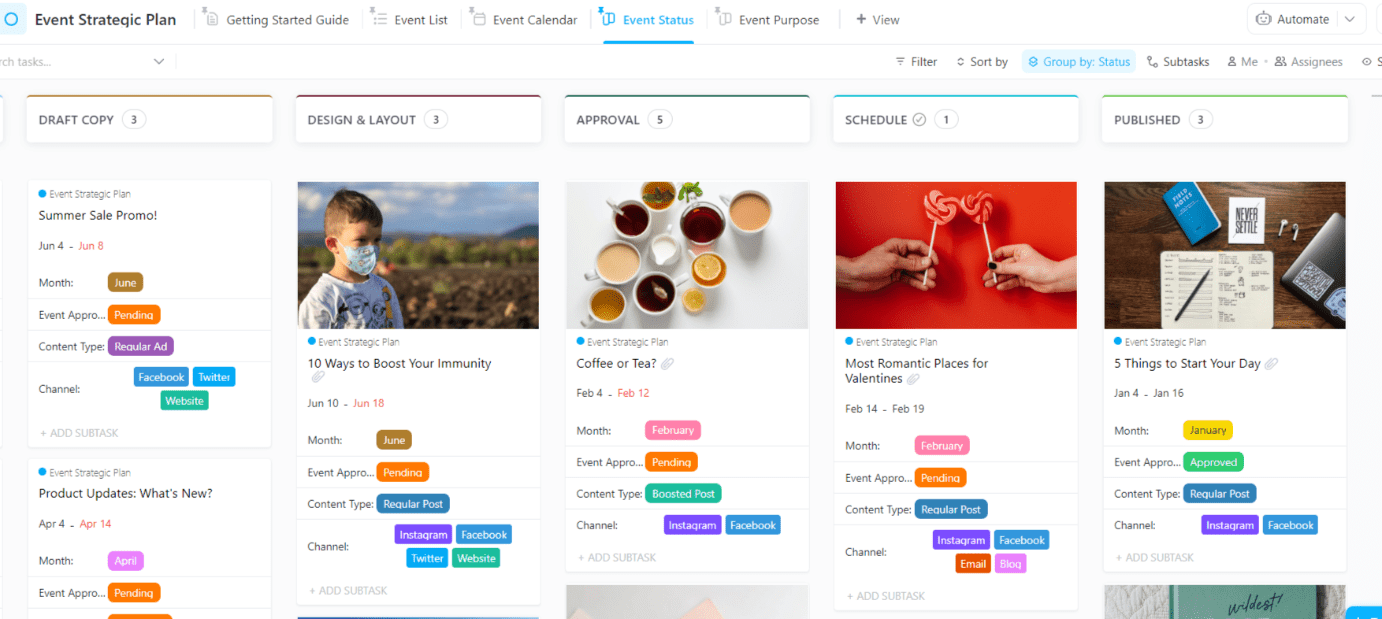
Sorry, there were no results found for “”
Sorry, there were no results found for “”
Sorry, there were no results found for “”

Every successful event, whether it’s a product launch, conference, or virtual workshop, begins long before the first attendee arrives.
The real magic lies in how the event is activated: the way teams plan, automate, and coordinate everything from marketing to post-event follow-ups.
Traditionally, event activation has meant pulling together countless moving parts, spreadsheets, task lists, vendor emails, and manual reminders. But with the rise of AI event management, the playbook has changed.
Shifting from fragmented workflows, AI event automation leverages data, predictive insights, and real-time collaboration to run more efficient and engaging events.
Recent research shows that organizations integrating AI and automated operations are significantly better equipped for growth. For example, one global survey by McKinsey & Company found that only 58% of marketing organizations rated their own operations as mature—indicating a large gap between ambition and capability.
In the context of events, this translates to fewer errors, better attendee experiences, and measurable ROI improvements. Let’s learn how to enhance attendee engagement by creating immersive brand experiences with AI and drive those precious brand activations!
AI event activation refers to the use of artificial intelligence to plan, execute, and optimize events—from pre-event logistics and marketing to post-event analysis and evaluation. It combines automation, predictive analytics, and workflow orchestration to help teams eliminate manual coordination, track performance in real time, and personalize attendee engagement.
In simpler terms, AI event activation connects the dots between people, processes, and data.
It ensures that every decision, from budgeting and task assignment to follow-up emails, is data-driven and synchronized across teams. Why does it matter? Manual event planning often consumes hundreds of work hours across departments.
AI tools can help reclaim time: teams using marketing operations platforms cite that around 65% of data remains underutilized within their organizations.
What hides in the data is exactly the kind of insight teams need to deliver a more personalized experience. 71% of business-to-consumer marketing leaders say personalization is significant—but many struggle to deliver it at scale.
When done correctly, AI event activation creates a continuous loop of learning: each event provides insights for the next one, driving higher efficiency and engagement over time.
Traditional event activations deliver what’s planned. They’re guided by pre-defined scripts, static schedules, and assumptions about what audiences will respond to.
Once launched, there’s little room for adaptation, and success depends largely on predictions made weeks or months earlier.
AI-driven activation delivers what’s needed—in the moment.
It goes beyond execution, analyzing live audience behavior, emotional cues, and contextual factors—such as engagement rates, dwell time, or even sentiment in social conversations—to refine the experience as it unfolds.
Studies show a 41% year-over-year increase in marketers using AI for live campaign activation, underscoring a shift from static event design to dynamic, data-driven engagement. The result is a new standard for event performance—one where every moment is measured, and every decision is informed by insight rather than intuition.
| Aspect | Traditional event activation | AI event activation |
| Planning | Manual coordination via spreadsheets and emails | Automated scheduling, dependency tracking, and resource allocation |
| Data usage | Minimal use of attendee data; reactive decision-making | Predictive insights based on attendee behaviour and history |
| Communication | Disconnected updates via email or chat | Centralized collaboration through event workflow automation |
| Execution | Prone to delays, missed updates, and manual rework | Real-time monitoring and automated alerts for risk prevention |
| Follow-up | Manual email campaigns and delayed reporting | AI-driven personalisation, segmentation, and instant ROI analysis |
In short, AI turns event activation from a reactive, task-heavy process into a proactive, insight-led operation.
Before diving deeper into how AI transforms event workflows, it’s worth understanding why traditional methods struggle to scale.
Event project management often involves multiple teams, marketing, operations, vendors, speakers, and logistics, all working under tight timelines and shifting priorities. Here are the most common challenges:
Imagine trying to orchestrate a conference with dozens of moving parts—speaker schedules, catering orders, sponsor deliverables, and attendee communications. One missed message can mean a speaker doesn’t get their updated time slot, or a vendor shows up with the wrong equipment. The margin for error is razor-thin.
👋🏾 AI-powered agentic workflows can make this part easy. Watch how seamless project execution is on ClickUp, the world’s first Converged AI Workspace.
Your registration numbers are in one tool, budget spreadsheets are stored elsewhere, and marketing analytics are buried in yet another platform. When it’s time to report on event performance or make a quick decision, you’re left piecing together information from multiple sources. For example, a marketing manager might struggle to connect attendee engagement data with campaign spend, making it tough to prove ROI or adjust strategy on the fly. For example, one study found that only 49% of marketers feel somewhat or very effective at using data-based insights to inform strategy.
The event ends, but the work is far from over. Attendee feedback, lead scans, and engagement metrics need to be gathered and acted on, fast. Yet, manual processes mean it can take days (or even weeks) to consolidate this information. By then, the excitement has faded, and potential leads have cooled off. A sales team might miss the chance to connect with a hot prospect simply because the data wasn’t ready in time.
Without predictive insights, event planners are left relying on gut feelings. Will 200 or 500 people show up? Should you order extra meals “just in case”? Overestimating means wasted resources and budget overruns; underestimating leads to long lines, empty seats, or unhappy guests. For example, a festival organizer might overbook security staff, only to find half of them with nothing to do, while another event runs out of badges because attendance was underestimated.
When the dust settles, leadership wants answers: What worked? What didn’t? Where did we see the most engagement? But with data scattered across teams and tools, reports are often incomplete or inconsistent. A CMO might receive a marketing recap that highlights social media buzz, while the operations team focuses on cost savings—neither paints the full picture. This lack of unified reporting makes it nearly impossible to pinpoint what truly drove success.
These limitations are operational headaches for sure, but beyond that, they impact the entire attendee experience. AI event tools directly addresses these pain points by connecting event planning, execution, and post-event insights into a unified system.
📮ClickUp Insight: 18% of our survey respondents want to use AI to organize their lives through calendars, tasks, and reminders. Another 15% want AI to handle routine tasks and administrative work.
To do this, an AI needs to be able to: understand the priority levels for each task in a workflow, run the necessary steps to create tasks or adjust tasks, and set up automated workflows.
Most tools have one or two of these steps worked out. However, ClickUp has helped users consolidate up to 5+ apps using our platform! Experience AI-powered scheduling, where tasks and meetings can be easily allocated to open slots in your calendar based on priority levels.
You can also set up custom automation rules via ClickUp Brain to handle routine tasks. Say goodbye to busy work!
Event activation strategies determine how brands connect with audiences before, during, and after an event. With AI in the mix, these strategies become more targeted, measurable, and scalable.
Let’s look at how:
This is the foundational phase: the moment when you set the tone, prime the audience, shape expectations, and build momentum. Without strong pre-event activation, you risk low attendance, weak engagement, or a misaligned audience.
What AI brings to the table:
Why this matters:
💡 Pro Tip: Use your pre-event activation to not just announce the event—but invite the audience into a narrative: hint at what they will experience, what they’ll walk away with, how this is for them. Then use AI to tailor that narrative by segment so it resonates differently for, say, senior executives versus early-career professionals.
Once your audience is on site (or tuned in virtually/hybrid), the focus shifts from build-up to experience delivery, real-time adjustment, and meaningful engagement. This phase is where your event lives or dies.
How AI enhances live activation:
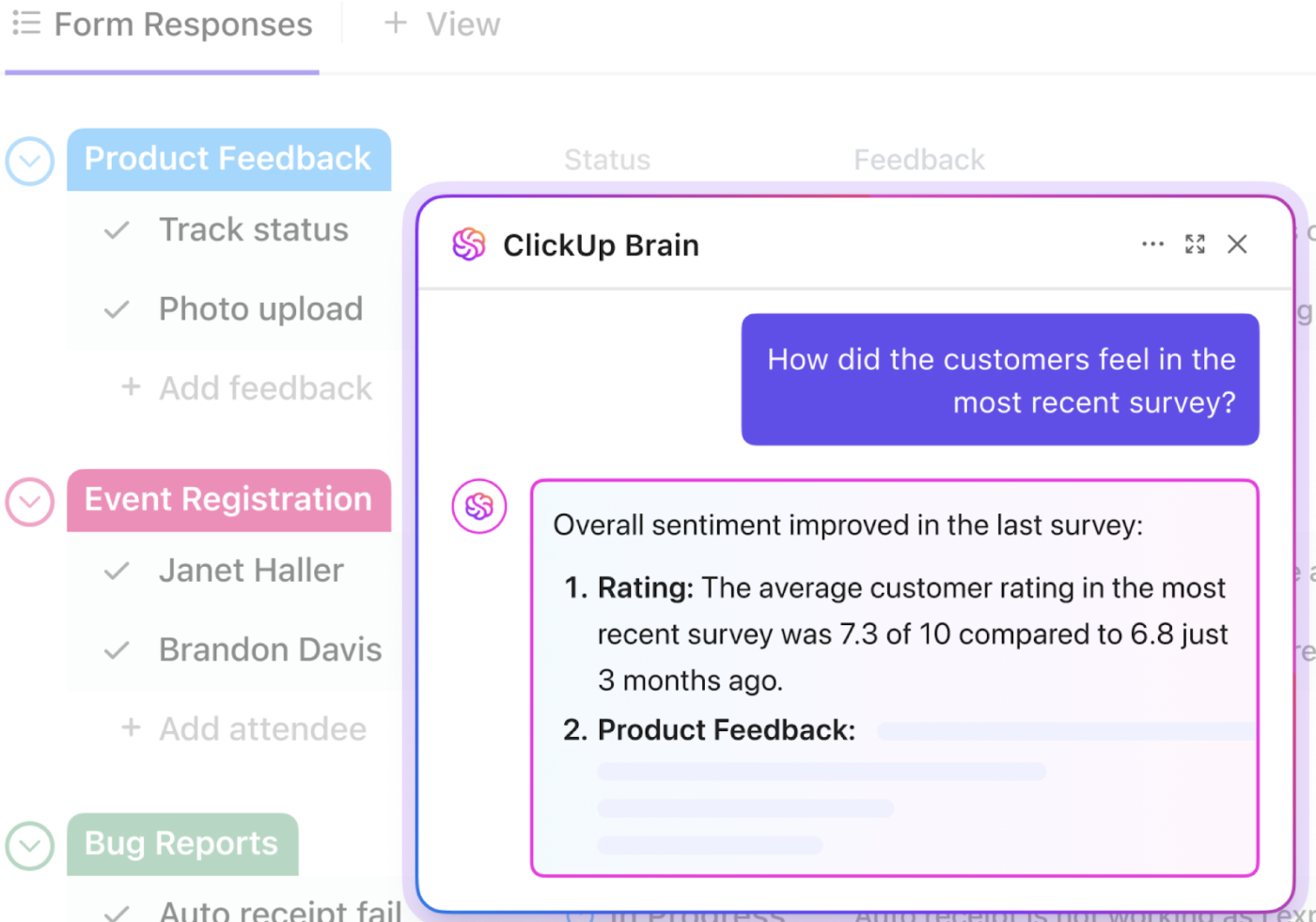
Why this matters:
💡Pro Tip: Before the event, map out the live “journey” of your attendee: from check-in, to session drop-in, to break-time, to networking, to content capture. Then overlay where you want live-data triggers (e.g., “session attendance drops below X” → “trigger pop-up poll”). Build your event operations dashboard with AI-driven alerts.
The event may be over, but the journey isn’t. Post-event activation is where you harvest the insights, nurture relationships, convert leads, and refine future strategy. It’s your chance to make the investment pay off and build longer-term value.
What AI supports in this phase:
Why this matters:
💡Pro Tip: Don’t let the epilogue drop off quietly. Embed a repeatable post-event playbook: send personalised communications within 24–48 hours, run AI-driven sentiment and behaviour analysis, and feed insights into your next event’s “pre-phase” planning. Ensure you assign clear ownership for post-event tasks (thank-yous, content repurpose, analytics, follow-ups).
Rather than treating AI as a tool confined to one stage of the lifecycle, we need to view it as a thread that weaves through every phase of your event workflow.
We already got a glimpse of it; now it’s time to dig a little deeper. Let’s start right at the beginning.
Why are you having an event in the first place?
The early stage of any event is often the least glamorous but most critical: collecting stakeholder inputs, outlining scope, and establishing those goals. This is the behind-the-scenes phase that often lacks glamour—but get it wrong and your whole event is on shaky ground. With AI, you’re taking the manual burden out of the earliest steps and carving out time for meaningful strategy.
Instead of forms being drafted by committee or data troves being assembled in spreadsheets, AI-powered survey tools step in and dynamically generate questions (based on event type, stakeholder role, and past event behavior), ensuring you collect the right inputs quickly. Meanwhile, data-enrichment tools plug into attendee/invitee lists, cross-referencing public and CRM data to validate, clean, and segment automatically—so you’re no longer chasing email addresses, duplications, or outdated records.
And when it comes to venue, date, and budget decisions: AI tools for event management draw on historical event analytics, attendance patterns, cost benchmarks, and venue availability to suggest your optimal combination. The result: fewer surprises, greater clarity early on, and more time for event teams to think, not just gather.
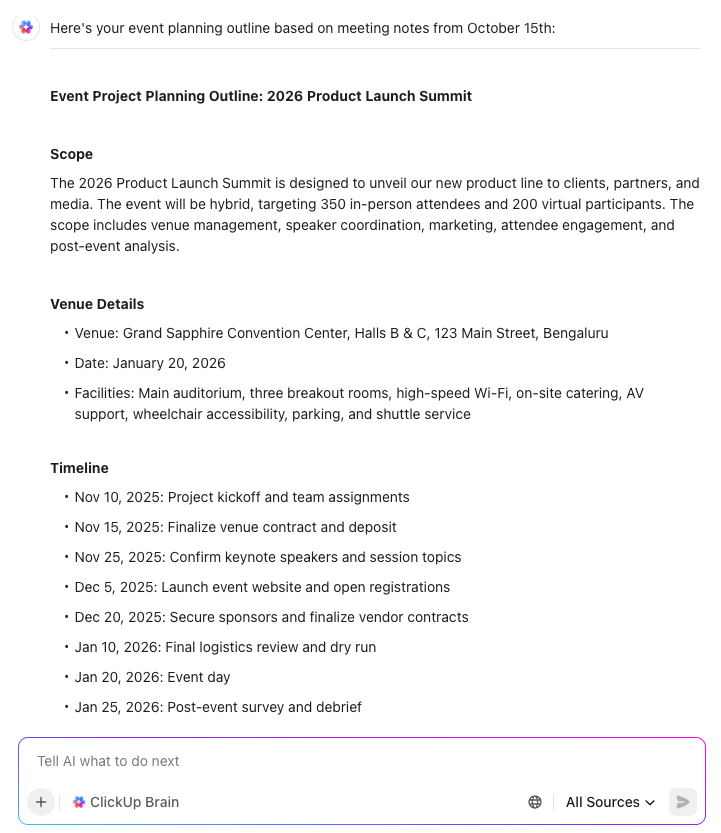
At Klinger’s at the Airport, AI transformed early-stage event scoping by moving planning from manual guesswork to data-driven simulation. Leveraging historical attendance, layout plans, booking trends, cost benchmarks, and venue availability, the AI platform forecasts optimal capacity, session layouts, staffing needs, and budget outcomes.
Planners can run “what-if” scenarios to anticipate high-traffic zones, adjust resources, and test different dates or configurations before committing, reducing surprises and freeing teams to focus on experience design. The result is faster, more confident decisions and a proactive approach to event strategy rather than reactive logistics
With the foundation in place, you move into orchestration: creating schedules, mapping resources, assigning tasks, forecasting budgets, and honing session flows. This is where AI begins to act as a strategic co-pilot rather than simply a back-office helper.
Imagine a system that ingests data from your past 3–5 events, compares registration trends and breakout room performance, identifies bottlenecks or oversubscription risks, and then suggests adjustments, such as a longer break, a larger room, or an alternate speaker slot. When a variable shifts—such as a key exhibitor dropping out or registration falling below forecast—the AI flags it and suggests alternative “plan B” options.
It can help with task assignment (automatically setting deadlines/responsibilities), bottleneck detection (resource or budget overload), and more engaging session design (session length/room size determined via engagement pattern modeling).
According to a recent industry survey, nearly two-thirds of event professionals believe AI will support the planning process—but many still feel under-equipped to apply it. By automating the grunt work at this stage, teams clear space to design the experience rather than just assemble logistics.
A project plan creator agent makes this part of the event go much smoother. See how. 👇🏼
The Pedowitz Group has come with A system where event teams leverage AI to support venue management and vendor selection: the AI ingests event requirements (capacity, layout, AV needs, budget), searches across a large vendor graph, and delivers a ranked shortlist of venues with real‑time availability signals and cost analysis—cutting the process from ~16‑24 hours (manual) down to ~1‑3 hours (AI‑enhanced).
Now the curtains open.
All the planning either pays off or falters here—and AI is your real-time amplifier. In the live phase, everything becomes data-rich: how many people are checking in now, which sessions are seeing drop-off, which booths are crowded, which network lounge is underused.
AI can monitor these signals (check-in times, foot-traffic heat maps, dwell times), identify when a session is underperforming, and trigger corrective action (send a push notification to attendees, reassign staff, or adjust the schedule). It can prompt personalized attendee engagement: recommend a networking match based on real-time behavior; suggest a lesser-known breakout just opened up; alert you if catering is running late.
Consider this: at large-scale events (including global multi-venue ones), organizing teams are experimenting with AI to monitor attendee movement and session engagement—and reallocating staff and space dynamically. It’s not just hype.
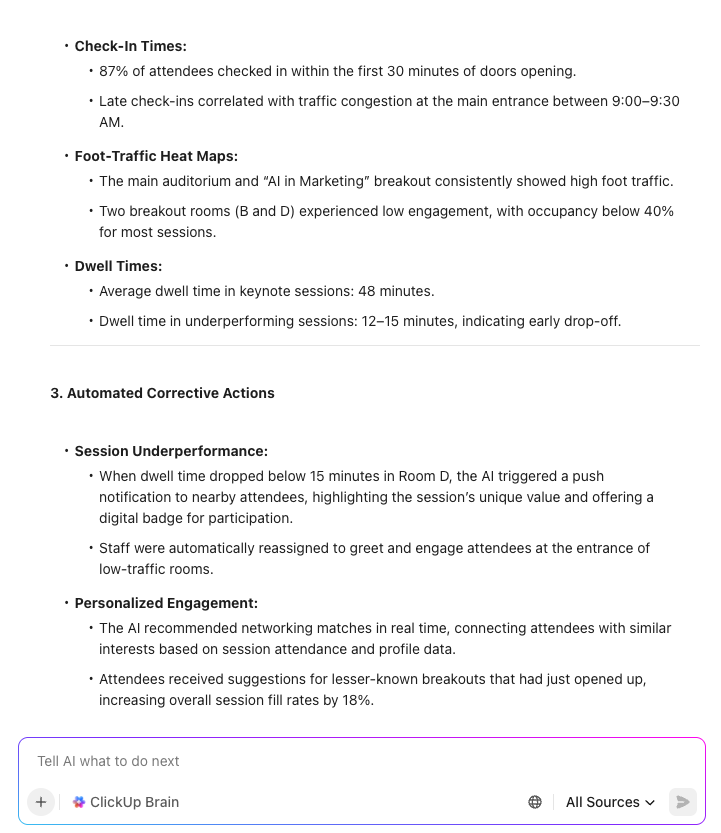
For example, the 2026 Winter Olympics, scheduled for 2026, will utilize AI extensively for scheduling and contingency planning.
Organizers have partnered with Juniper Networks, deploying their “AI-Native Networking Platform,” to handle the immense digital, operational, and security demands of the 2026 Olympics Games across multiple venues. The system is designed to provide real-time data management, ultra-high-capacity connectivity, cybersecurity protections, and seamless access for athletes, volunteers, spectators, and media.
Meanwhile, broadcasters are preparing for next-level delivery: for instance, China Media Group, in a partnership agreement with the Organizing Committee, will integrate AI-driven production and 8K ultra-HD transmissions to enhance fan experience globally. Together, these systems mean the 2026 Winter Games will not only stage elite sport, but will operate as a connected, AI-powered ecosystem, enabling smarter logistics, richer viewing, predictive maintenance, dynamic crowd flows, and stronger cyber-resilience.
When the lights go down and attendees depart, many teams relax, but that’s precisely the moment when the real value kicks in. AI enables you to transform raw data and engagement into insights, conversions, and smarter planning for the next event.
Key capabilities: AI auto-deploys tailored feedback/survey emails while attendee interest is still high; models lead-scores based on who attended, engaged, and interacted; runs sentiment-analysis on feedback, social-media chatter, and content-consumption; repurposes event content into clips, blog posts, or webinars automatically; and feeds findings into your next event’s playbook.
Follow-up now becomes smarter, faster, and infinitely more valuable. You’re converting attendee interest into relationships, leads into opportunities, and experience into learning loops.
In ClickUp, features like Clips with built-in transcription make it easier to repurpose and distribute content, while ClickUp Brain is on standby to help you create content.
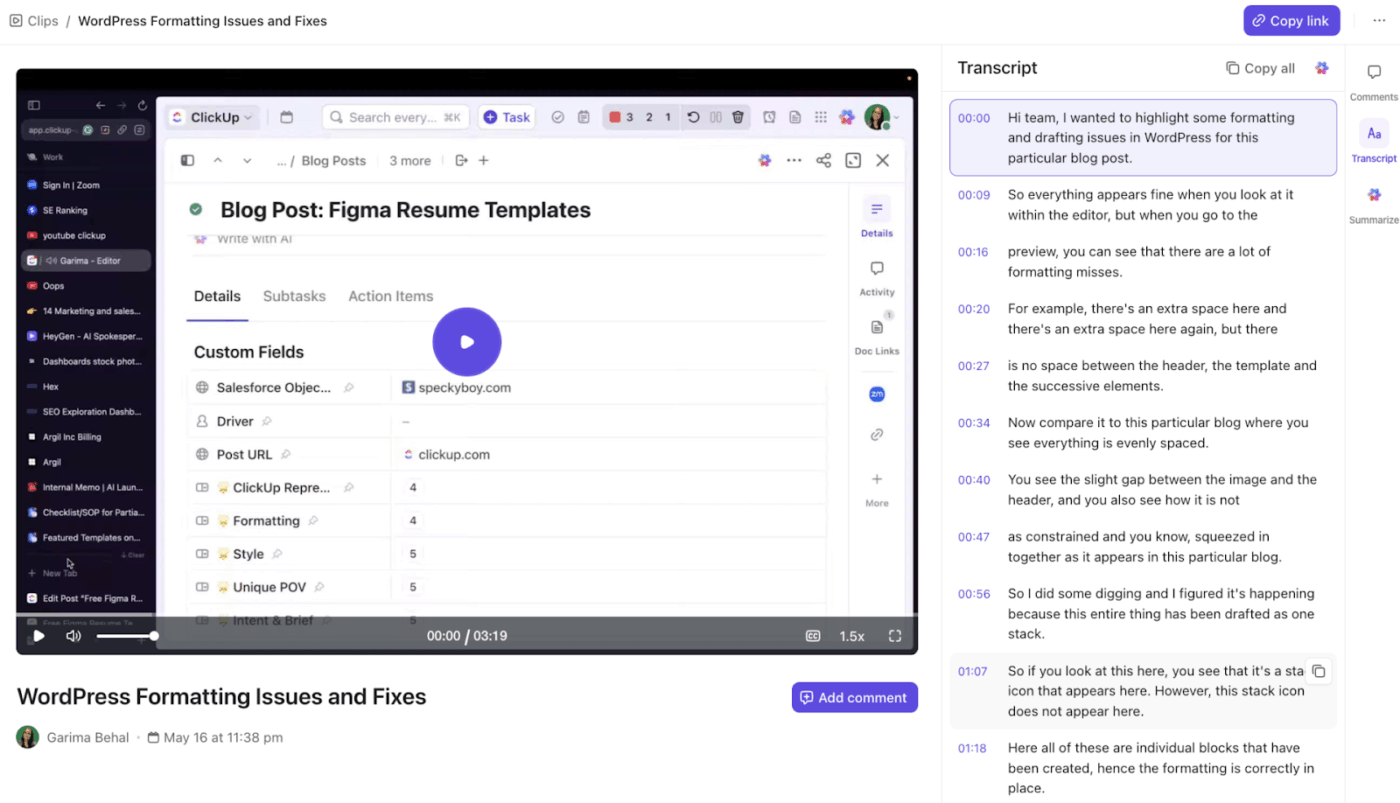
For its September 2025 virtual conference, MarTech built an AI‑driven content generator ecosystem to transform live event sessions into multi-format assets and insights. Each panel was recorded and transcribed using AI tools, then processed with ChatGPT to extract key takeaways, quotes, and summaries.
The team further generated audio overviews and short video clips, while AI models evaluated session delivery versus promised outcomes, including speaker share of voice. This workflow drastically reduced manual effort, accelerated content distribution across channels, and provided actionable insights for future events. By integrating human review with AI automation, MarTech amplified the reach and value of its event content, turning a single live event into a reusable, data-rich content ecosystem.
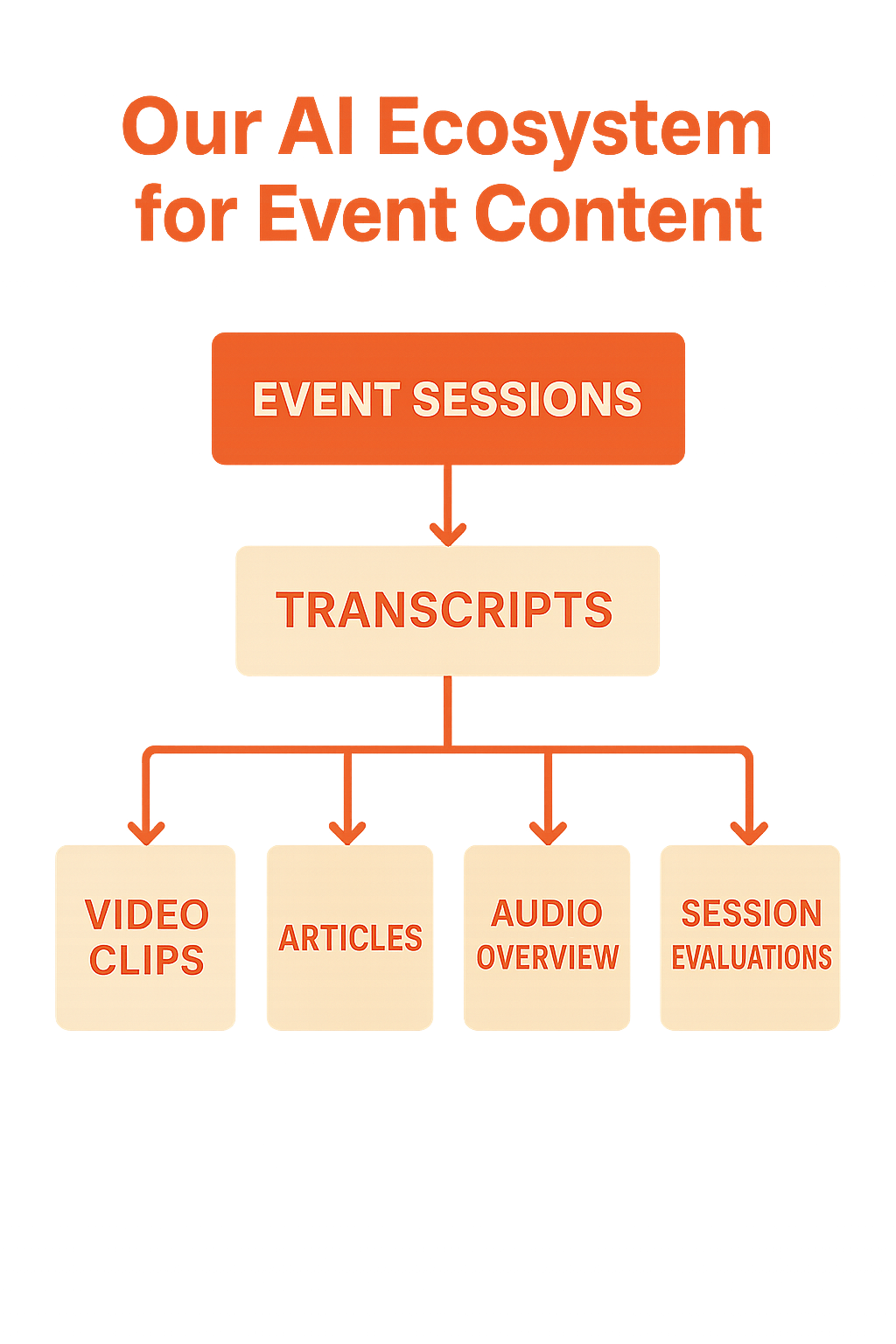
The event activation landscape has evolved far beyond spreadsheets and email blasts.
To truly capture attendee engagement, drive conversions, and prove the ultimate return on investment, you need a powerful, integrated tech stack.
But not all event platforms are built to connect planning, event marketing, and measurement seamlessly. You need a platform that goes beyond basic logistics and understands the necessity of cross-functional alignment and automated reporting for maximum impact.
Let’s take a closer look at some of the top tools on the market today, starting with the one that unites your entire event workflow.
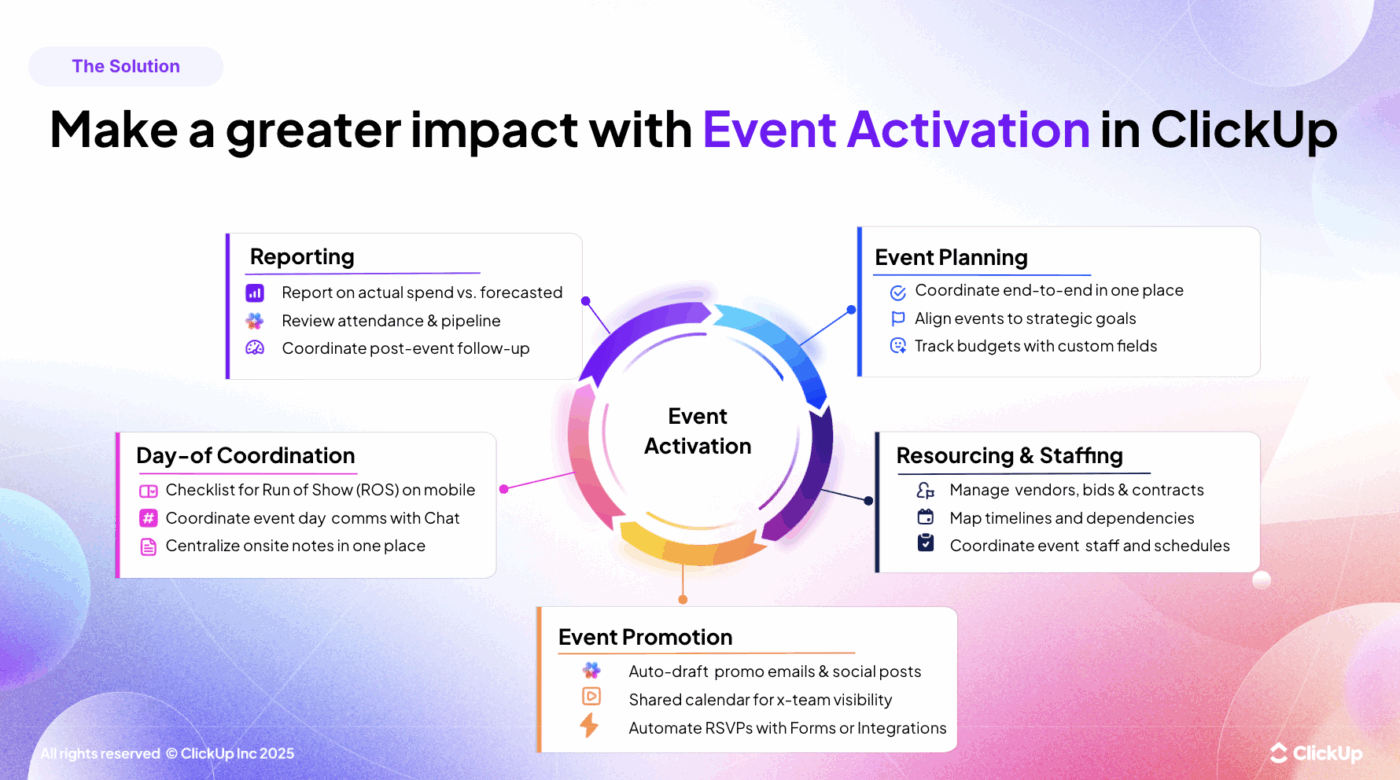
As the first Converged AI Workspace, ClickUp stands out as a comprehensive AI-powered event activation tool, designed to unify every aspect of event management in a single, collaborative workspace.
Traditional event planning often suffers from scattered tools, manual processes, and communication gaps, but ClickUp addresses these challenges by integrating all workflows—intake, execution, and reporting—into one seamless platform via tailored solutions like ClickUp for Marketing and ClickUp for Events.
Its contextual AI Agents and ClickUp Brain, the contextual AI assistant, automate repetitive tasks, provide intelligent recommendations, and ensure that every stakeholder is aligned throughout the event lifecycle. Start by asking what you need, pulling insights from previous conversations, and generating an event plan!
A key use case for ClickUp’s event activation solution is the intake and planning phase.
Here, AI Custom Fields and Agents streamline the collection and evaluation of event requests. For example, the Event Brief Creator Agent automatically generates detailed briefs based on information submitted via ClickUp Forms, while the Event Evaluator Agent reviews and recommends next steps.
Subtask agents handle the renaming, assignment, and scheduling of tasks, ensuring that nothing falls through the cracks. This structured intake process enables marketing and field teams to quickly move from idea to approved event, with all critical details captured and organized from the start. See it in action here. 👇🏼
During execution, ClickUp’s AI agents continue to drive efficiency and clarity.
The Subtask Summary Writer Agent provides concise updates, while the Event Staff Planner Agent helps allocate roles and confirm participation. The Run of Show Agent creates detailed timelines, and the Content Creator Agent generates promotional materials and RSVP forms. Real-time agents, such as the Event Change Notifier and Attendee Dietary Agent, keep everyone informed of updates and special requirements. These automated workflows ensure that event execution is smooth, coordinated, and adaptable to last-minute changes.
Finally, ClickUp excels in post-event reporting and analysis. Teams can track attendance, engagement, and budget performance, making it easy to measure success and identify areas for improvement. By consolidating all event data and feedback in one place, ClickUp enables continuous learning and optimization for future events. This end-to-end orchestration transforms event activation from a chaotic, manual process into a streamlined, intelligent workflow that delivers measurable impact at scale.
Immediately jump into organized execution using a vast library of pre-built templates for every event phase, drastically cutting down setup time:
Event Project Plan Template: Perfect for breaking down the event into an agile, timeline-driven execution plan with clear dependencies and resource assignments
Event Management Template: A comprehensive Workspace for orchestrating logistics, vendor management, guest communication, and budgets
Event Planning Template: Ideal for mapping out the initial strategic phase, including ideation, venue selection, and high-level budgeting
pricing-table
A user review says:
ClickUp is extremely versatile and allows me to create solutions for practically any business case or process. The automations and AI agents are also super powerful! I can setup automatic actions via logic or via AI prompts to run do just about any action in ClickUp I can imagine. Lastly, just the pace of product updates. There are truly significant feature updates every month and the company is heavily invested in its growth.
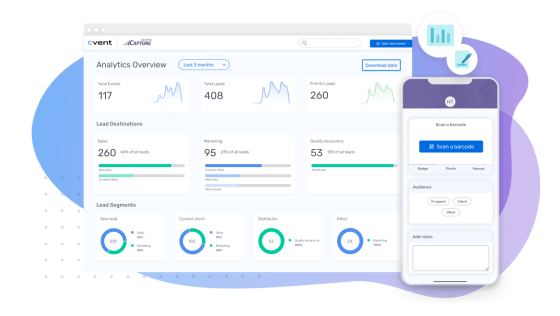
Cvent stands as the gold standard for managing complex, large-scale corporate events and conferences.
It offers a comprehensive suite of tools that manage the most challenging aspects of event logistics. This includes an immense database for venue sourcing, a dynamic online registration platform capable of handling complex ticket types and group registrations, and a robust set of on-site tools for check-in, badging, and lead capture. For organizations with high compliance needs and large attendee volumes, Cvent is the trusted, heavy-duty platform that guarantees professional, glitch-free execution.
A user review says:
Cvent Event Management is an incredibly efficient platform that streamlines every aspect of event planning. Its comprehensive suite of tools meets all my business needs, from registration to reporting, saving time while improving accuracy. The intuitive interface and reliable customer support make managing events simple, professional, and highly effective every step of the way.
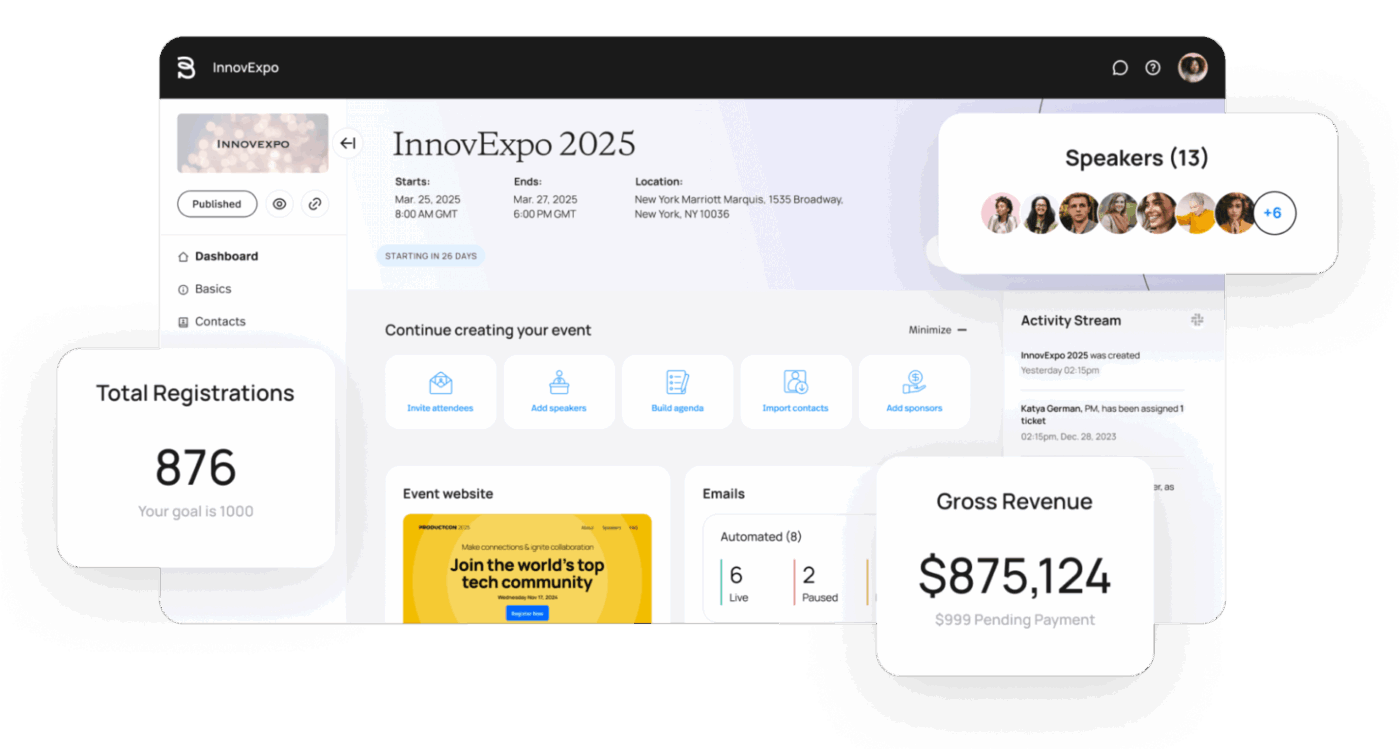
If your primary goal is maximizing attendee engagement and immediately demonstrating impact with actionable data, Bizzabo is your platform. It’s an Event Success Platform that seamlessly unifies event websites, communication, and a sleek mobile app into a cohesive whole.
Bizzabo provides deep, real-time analytics on attendee behavior—tracking which sessions they attend, who they network with, and how they interact with sponsors. This immediate insight into the health of your activation allows for on-the-fly adjustments and provides definitive proof of engagement to validate sponsor value.
A user review says:
One the best parts about Bizzabo is that it is very well designed from a user experience standpoint. We are able to create and publish different types of events, from our large-scale conferences to our smaller public program courses. Those interacting with our events find the microsites and platform easy to interact with as well – From learning about our events to the checkout process. It’s ability to integrate with our CRM is also not too difficult which allows us to track purchases if we wish!
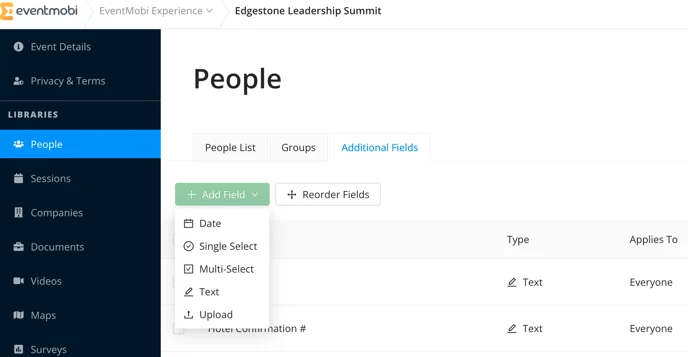
EventMobi shines by providing a highly customizable mobile app experience that serves as the dynamic hub for any in-person, virtual, or hybrid event. It goes far beyond a simple agenda viewer, offering sophisticated features such as personalized networking, gamification that drives attendance to booths, and intuitive lead retrieval for exhibitors.
For organizations that view the attendee smartphone as the central touchpoint for activation, EventMobi provides the tools to keep engagement high, foster community, and drive measurable actions before, during, and after the function.
A user review says:
EventMobi is a wonderful platform for members to utilize during their event. The scheduling and descriptions of events made life and coordination easier to navigate than other platforms I have used. The reminders of chosen events was a complete game changer! I didn’t feel like I had to be glued to my phone or the app to ensure I made it on time for lecture, I could enjoy my time and be present in the moment of experience!
The effectiveness of your event activation is determined long before the doors open.
These AI marketing tools ensure you are nurturing prospects, driving registration, and automating the high-touch follow-up that converts attendees into a qualified sales pipeline.
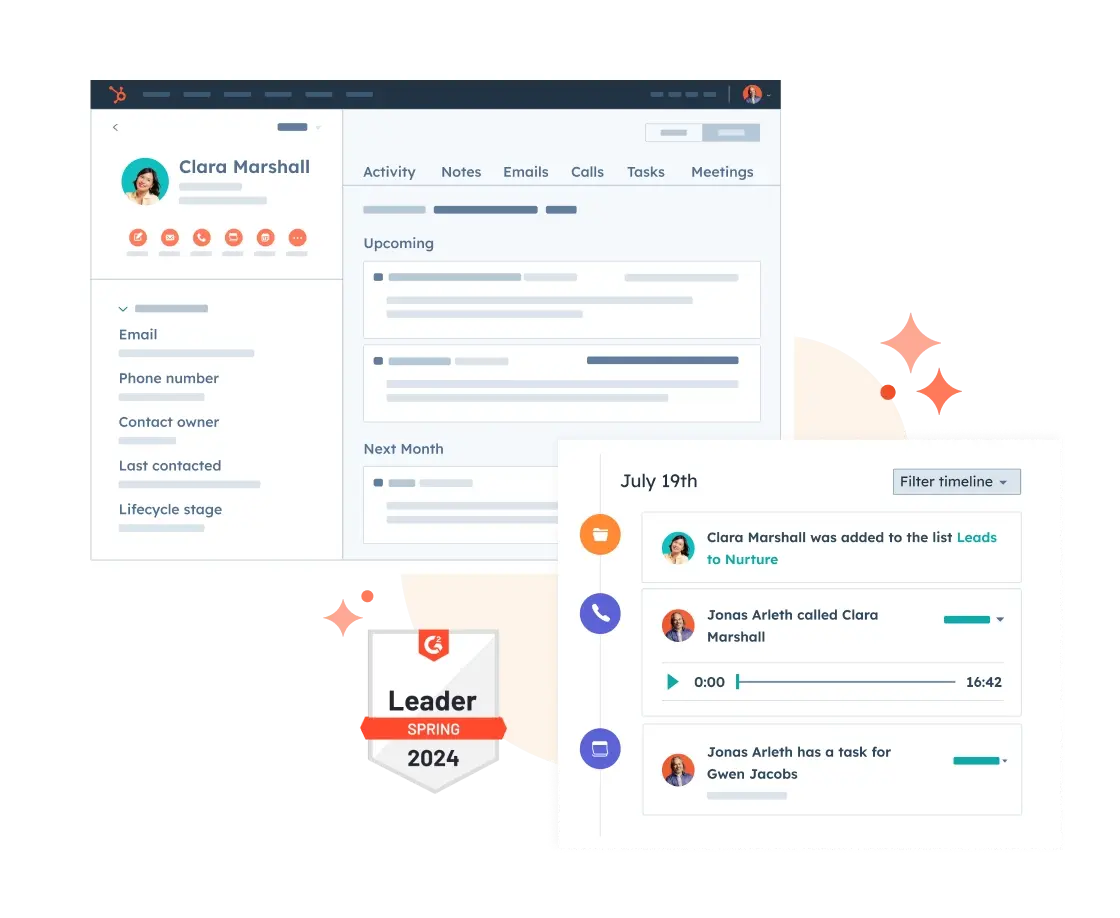
For teams leveraging the HubSpot CRM ecosystem, the Marketing Hub is the ultimate force multiplier for event activation. It allows you to create smart, personalized event journeys that are triggered by event-specific actions—from the initial segmented invitation email to a series of automated follow-ups based on whether a prospect registered, attended a specific session, or visited a sponsor’s page.
Its greatest strength is the automated lead scoring and pipeline management, ensuring high-value attendees are immediately identified and prioritized for timely sales outreach post-event.
A user review says:
Hubspot is an exceptionally powerful product that manages to avoid being cluttered or difficult to use. It plays a central role in our daily business operations, offering a quick setup process while remaining flexible enough to implement highly efficient solutions like custom workflows. The support team at Hubspot is always accessible and has been instrumental in helping set up Anyvan for success. The extensive information available, along with advanced technical features such as the API and MCP server, make it a pleasure to work with from an engineering manager’s perspective.
Marketo is purpose-built for the enterprise-level B2B marketer managing vast databases and complex sales cycles. It offers the tools to execute highly sophisticated, multi-channel event campaigns, manage progressive profiling on registration forms, and perform advanced behavioral scoring based on engagement.
More critically, Marketo provides robust revenue attribution, helping you definitively prove the exact value of event-generated leads in relation to your overall marketing investment and sales pipeline.
A user review says:
I find the learning curve of Adobe Marketo Engage to be quite challenging. The interface is complex and not very intuitive, especially when compared to other platforms like HubSpot or Mailchimp. This complexity often demands technical expertise, which not all companies, including mine, have readily available.
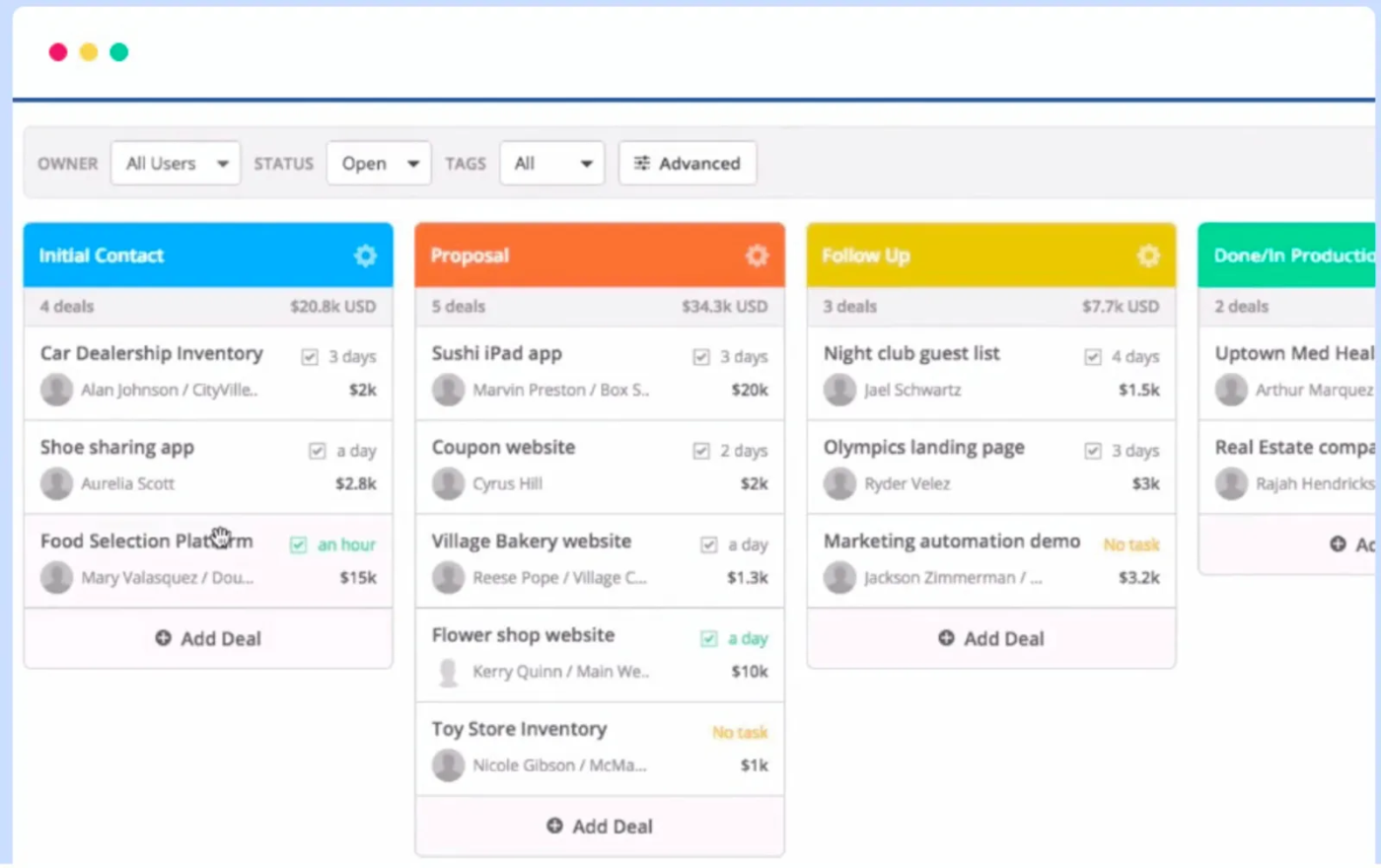
ActiveCampaign gives you the ultimate power to design intricate, dynamic automation maps tailored to individual attendee behavior. You can visually build complex if/then workflows that segment and personalize content based on micro-actions: Did they click the keynote speaker link? Did they open the last email?
This detailed focus on deep segmentation ensures every lead receives the most relevant, timely content, accelerating their journey from attendee to qualified prospect and maximizing the conversion opportunity.
A user review says:
The segmentation capabilities are outstanding – I can target my audience with precision based on behavior, engagement, and custom data, which has significantly improved our email performance and conversion rates. I also love the seamless CRM integration that keeps our sales and marketing teams aligned.
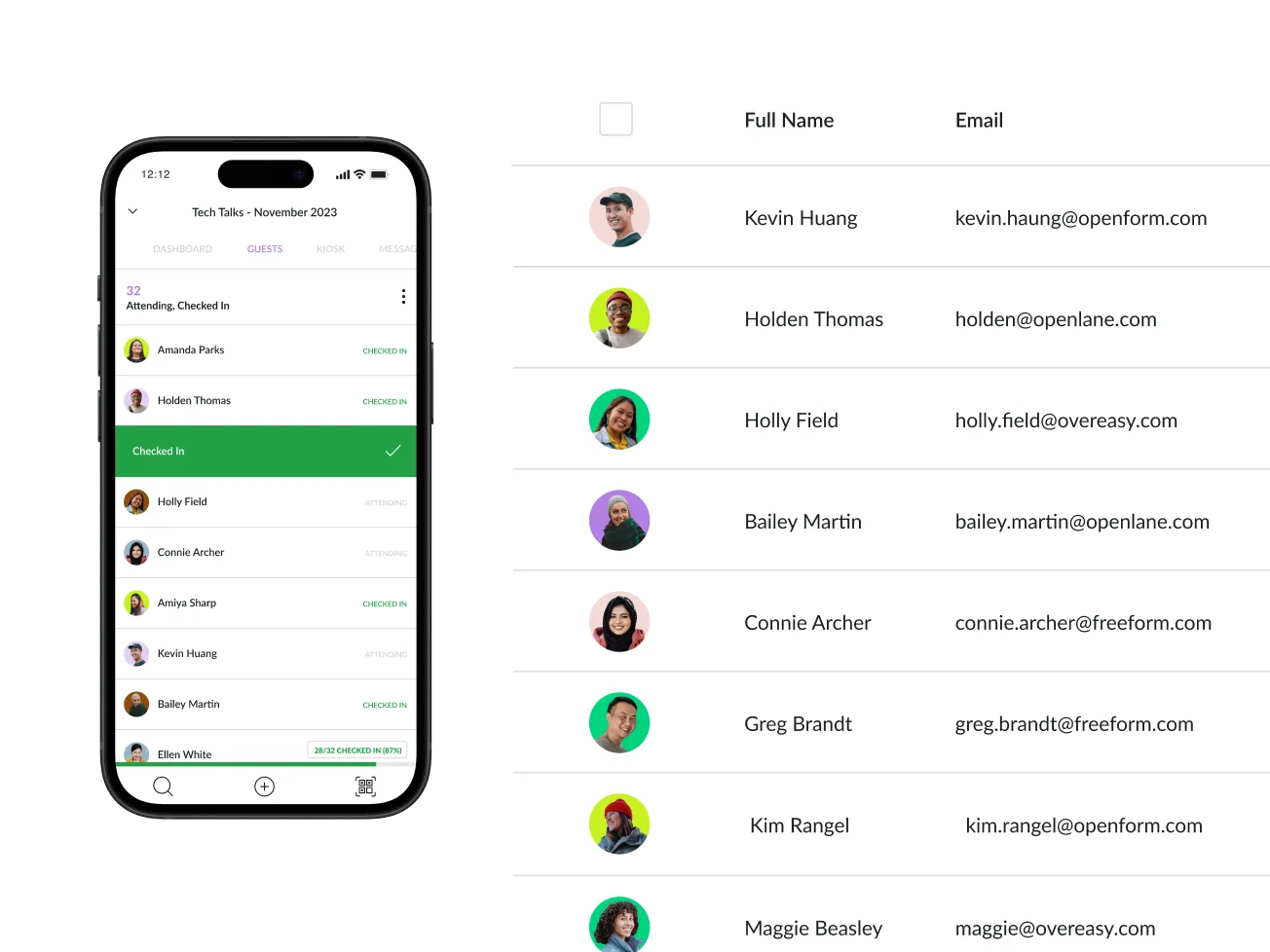
Splash is the modern solution that simplifies the event’s front-end experience. It allows event and marketing teams to quickly deploy stunning, brand-compliant event registration pages, beautiful landing pages, and polished email communications in a matter of minutes, without needing designer or developer support.
Its native focus is on optimizing conversion rates, providing easy-to-use form logic, and capturing clean lead data, making it invaluable for high-velocity marketing teams that host frequent field events and need immediate, scalable event activation.
A user review says:
Splash makes organizing and promoting events incredibly easy. The intuitive interface lets me create visually appealing invitations and manage RSVPs efficiently. The platform’s automation features save time and help maximize event attendance. I also appreciate the detailed analytics, which provide valuable insights to improve future events. The support team is always responsive and helpful, making the whole experience smooth and reliable.
Without reliable, real-time data, your event ROI is just a guess.
These tools provide the critical insights and structured feedback necessary to measure activation success, calculate cost per lead, and strategically prove event marketing’s substantial impact.
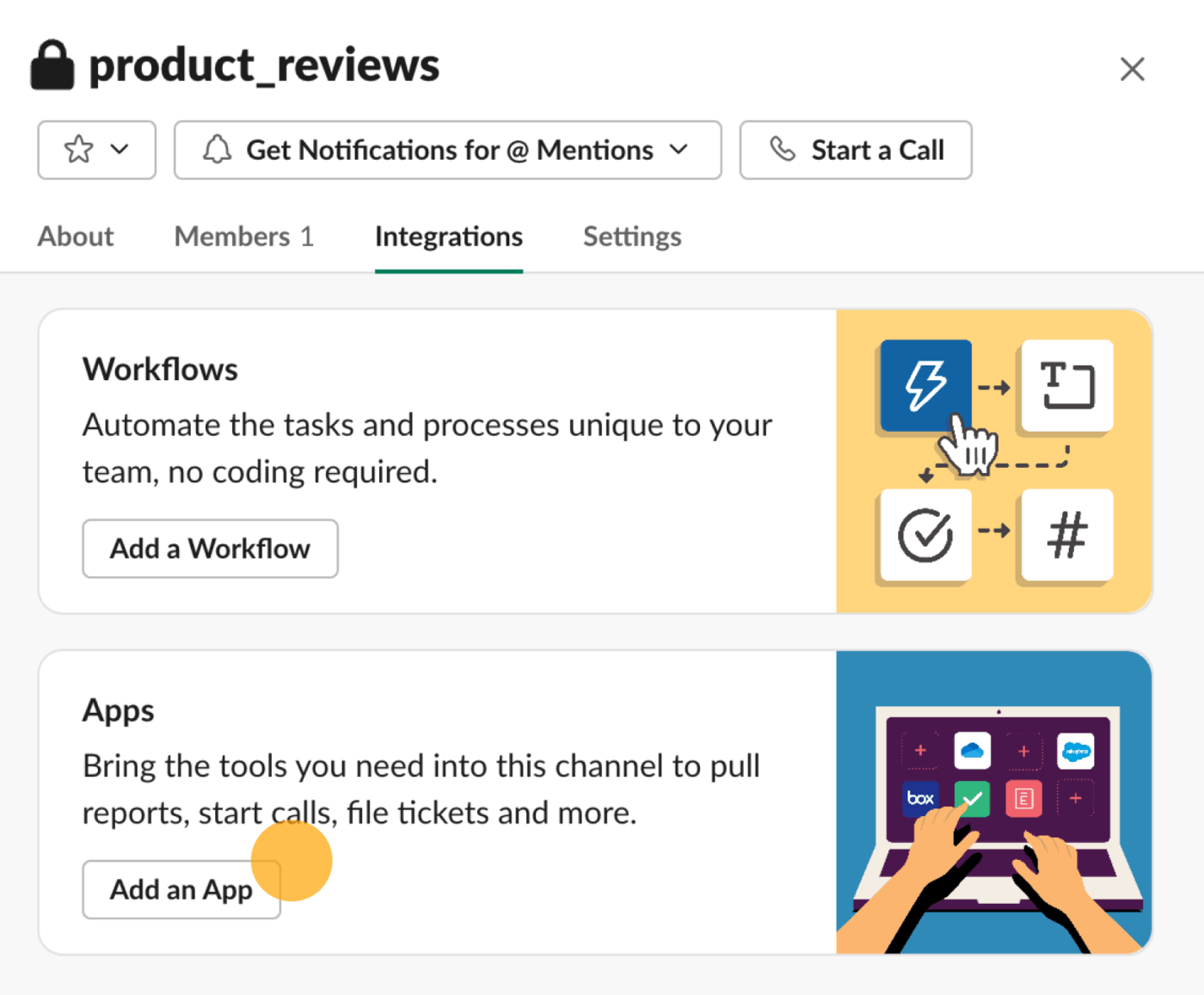
If you are struggling with low survey response rates, Typeform is the aesthetic and functional solution. It ditches traditional, dry forms for a visually engaging, conversational interface that asks one question at a time.
This design choice makes feedback collection feel less like a chore and more like an interactive dialogue, significantly boosting response rates for immediate post-session feedback, sponsor-specific questions, and quick, high-response exit surveys.
A user review says:
There are a ton of different options available in Typeform to ensure your needs are always met. It’s a simple process to create forms and surveys, and it’s simple for my clients to use – which is a huge plus for me. I work with extremely busy clients who appreciate the simplicity of the application. I use Typeform every day for taking client applications, checking on client progress, and collecting client testimonies.

GA4 is the essential foundation for measuring your digital event activation funnel.
Leveraging its modern, event-based data model, it provides granular intelligence on your event website—showing exactly where traffic originates (paid, social, email), how users navigate the registration process, and which marketing campaigns are driving the highest conversion rates from visit to registration completion.
A user review says:
I really like how Google Analytics helps me see what’s happening on a website in real time. It gives a clear picture of where the traffic is coming from, how users interact with pages, and what content performs best. The way it connects with Google Ads and Search Console makes tracking campaigns and understanding ROI much easier.
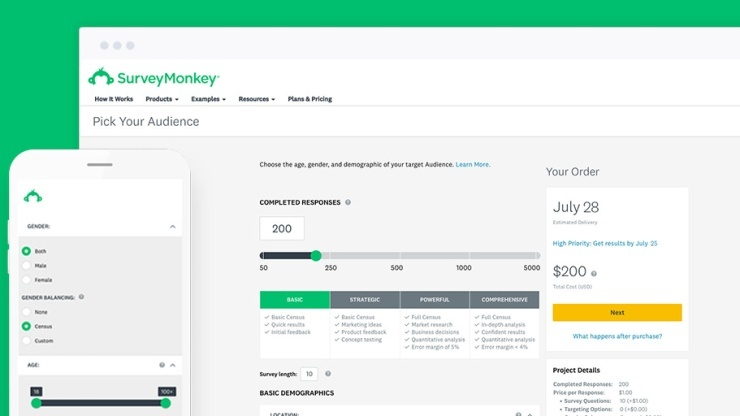
SurveyMonkey is the industry veteran, providing a robust, enterprise-scale platform for all your feedback needs.
Its strength lies in its comprehensive feature set, which includes advanced skip logic, detailed multivariate reporting tools, and a massive library of pre-built, scientifically sound event survey templates for everything from speaker ratings to overall satisfaction metrics.
For organizations that require in-depth statistical analysis and reliable data for internal reporting, SurveyMonkey offers a credible and authoritative solution.
A user review says:
I appreciate how straightforward it is to create and share surveys using SurveyMonkey. The platform’s interface is intuitive and user-friendly, allowing me to design professional surveys without requiring any technical expertise. Additionally, the clear data reports and charts make it quick and efficient to analyze responses. The available templates and question logic features are especially helpful, as they save considerable time when constructing more complex surveys.
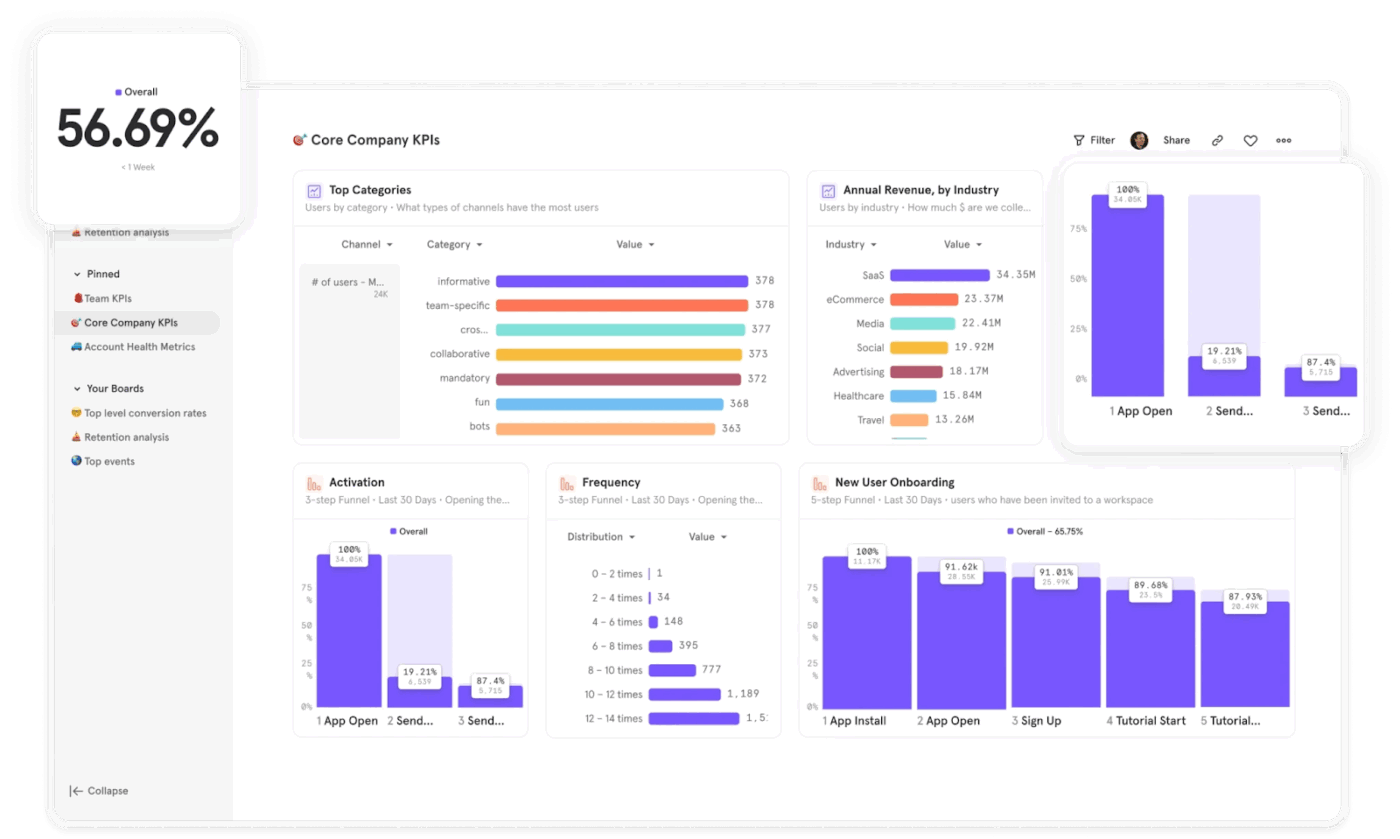
Mixpanel is the ultimate tool for understanding granular, in-event behavioral data, especially critical for virtual, hybrid, and integrated event app activations. It focuses on event-based analytics, allowing you to track specific user actions (clicks on a booth, time spent in a breakout room, content downloads) to understand exactly how attendees engage.
By tracking these micro-interactions, you get crucial data to optimize content, identify key moments of activation, and measure sponsor ROI with unmatched precision.
A user review says:
I’ve tried multiple other product analytics tools (Amplitude, Smartlook, Heap, Pendo, etc.), and Mixpanel consistently comes out on top.
The only improvement I’d love to see is a smoother way to view and track sequences of events in a user’s activity feed. Right now, it can feel a bit clunky to open each event one by one just to check properties and piece together context. Having a more streamlined timeline view would make this process much easier, but I don’t have a ready solution in mind.
⚡️ Template Archive: Free Event Planning Templates & Checklists in Excel & ClickUp
One of the most powerful applications of AI in event activation is feedback collection and analysis. Traditionally, post-event surveys were slow to distribute and difficult to analyze.
AI accelerates this via:
| 🔹 AI feature | ⚡ How it works | 💡 Why it matters |
|---|---|---|
| 📨 Automated survey deployment | Sends surveys immediately after the event via email, SMS, or app notifications. The system can personalize timing based on attendee behavior (e.g., sending after the last session attended). | High response rates because feedback is collected when the experience is fresh. Personalization increases completion. |
| 📝 Natural language processing (NLP) analysis | Reads open-text feedback, summarizes responses, detects sentiment (positive, negative, neutral), and flags recurring themes or complaints. It can even cluster similar suggestions automatically. | Saves time manually reading hundreds of responses, uncovers hidden insights, and highlights emotional reactions that numbers alone can’t show. |
| 📊 Engagement tracking | Tracks metrics like session attendance, time spent per session, clicks, Q&A participation, and interaction frequency. AI finds patterns, e.g., which sessions kept attendees longest. | Understand which content truly resonated, identify drop-off points, and predict attendee interests for future events. |
| 🔗 CRM & marketing integration | Pushes feedback and engagement data directly into CRM or marketing platforms. It can segment attendees by interest, satisfaction, or engagement level. | Enables highly personalized follow-ups, smarter retargeting campaigns, and better relationship management. |
| 🔮 Predictive analytics | Analyzes historical and current event data to recommend improvements, predict session popularity, and optimize logistics (e.g., room sizes, session timing). | Creates a continuous improvement loop. Future events can be more engaging, efficient, and tailored to attendees preferences. |
💟 Bonus: Brain MAX is your AI-powered desktop companion that helps streamline and enhance event activation from planning to post-event analysis. With deep integration across your emails, calendars, documents, and project management tools, Brain MAX keeps all event details, schedules, and communications unified in one place. You can use talk-to-text to quickly capture ideas, assign tasks, and set reminders for every stage of your event, ensuring nothing slips through the cracks.
During the event, Brain MAX helps you stay organized by pulling up attendee lists, session schedules, and key documents instantly. After the event, it can analyze feedback and engagement data from your connected sources, summarize open-text responses using advanced AI, and highlight key insights or action items for follow-up.
Brain MAX also assists in preparing reports, organizing feedback for CRM updates, and setting up next steps for future activations. By automating busywork, surfacing actionable insights, and keeping your workflow connected, Brain MAX empowers you to run smoother, more impactful events with less manual effort.
According to industry data, events now account for a significant portion of marketing budgets.
In addition, many organizations invest heavily in technology and analytics: for example, a recent Deloitte study found that 74% of firms had invested in AI or generative-AI over the past year, and organizations reporting the ability to measure ROI for their digital initiatives were far more likely to say they were deriving value.
This tells us two things:
When you deploy AI-enabled workflows for event activation, you need to link those investments to measurable outcomes in registration, engagement, lead generation, conversion, budget efficienc,y and satisfaction to show ROI.
Below are the major metrics to include, along with industry benchmarks and how AI or automation tools help augment each metric.
✅ Registration vs Attendance (and attendance rate)
A basic but still critical metric: track how many people registered vs how many actually attended.
One recent report showed “event attendance” was cited as a success metric by ~83.4% of respondents, while “ROI measurement” was used by ~45.2% only. Another benchmarking report showed that for B2B events, 71% of brands measured the number of visitors/attendees, and 64% tracked ROI.
By integrating registration systems and check-in data, AI can identify drop-off trends (e.g., by channel or demographic) and suggest which channels require improvement for next time.
✅ Engagement metrics
Attendance alone is no longer sufficient. Engagement depth matters: e.g., how many sessions were attended, how many poll responses, chat/QA participation, and dwell time.
According to research from “The Business of Experiential” (2025), ~60% of experiential marketers report using session engagement as a metric.
AI can help with Session-by-session analytics (who entered, how long stayed, who asked questions) and aggregate data across channels, enabling identification of high-performing sessions or content gaps in near-real time.
✅ Lead generation and conversion rates
It is important to track not just “leads captured” but lead quality, and conversion downstream (MQL → SQL → customer) where possible.
AI workflow automation can support lead-scoring: by aggregating event engagement data (sessions attended, content downloads, booth visits) and feeding into CRM, AI can rank which attendees are most likely to convert, thereby guiding follow-up & improving conversion efficiency.
✅ Budget efficiency (Planned vs Actual Spend + Cost-Per-Attendee/Lead)
Understanding how your budget performed is key. Benchmarking materials emphasise cost-per-lead or cost-per-attendee as useful metrics.
AI tools or automation help by forecasting spend, flagging budget overruns (e.g., manual tasks taking longer than planned, higher personnel cost), and recommending reallocation of resources (e.g., shifting spend from low-conversion channels to high-conversion ones).
✅ Attendee satisfaction & sentiment
Satisfaction (via surveys) and sentiment (via social media, post-event feedback) provide qualitative insight that complements quantitative metrics.
According to the 2025 “Business of Experiential” report, real-time attendee feedback is used by ~72% of confident measurement organizations.
AI or sentiment-analysis tools can analyse open-ended responses, social-media mentions, hashtags, and chat logs to identify themes (e.g., “session too long”, “great networking”), enabling rapid corrective action for future events.
✅ Other advanced metrics & long-term impact
Beyond immediate metrics, you should consider: content consumption post-event (downloads/views), behavioural shifts (e.g., demo requests, trial sign-ups), pipeline influence (did event-attendees move faster through funnel), brand impact (e.g., awareness lift, social media mentions).
Even with AI, challenges remain in event activation. The most common include:
| Challenge | Description | Example Impact / Scenario |
|---|---|---|
| High upfront costs and unclear ROI | Many organizations hesitate to invest in AI platforms or integrations due to limited budgets or uncertainty about measurable returns. | Smaller event teams may rely on manual tools instead of AI-driven automation or analytics due to perceived high costs. |
| Fragmented or incomplete data sources | Event data often sits across registration tools, CRM systems, social media, and event apps — making integration difficult. Poor data quality reduces AI accuracy. | AI tools can’t effectively segment audiences if registration and CRM data aren’t synced. |
| Skill gaps in analytics and automation | Event professionals often lack the technical knowledge to manage AI workflows, interpret dashboards, or fine-tune predictive models. | Teams underutilize AI tools, relying only on basic automation features instead of predictive insights. |
| Insufficient historical data for AI models | Smaller or first-time events may not have enough data to train effective AI systems for personalization or forecasting. | Predictive models fail to accurately forecast attendance or engagement for new events. |
| Managing attendee data ethically and legally | AI systems require large volumes of personal data (e.g., registration details, engagement behavior). Complying with GDPR, CCPA, or regional laws can be complex. | Using AI to analyze attendee sentiment on social media could trigger privacy concerns if done without consent. |
| Cultural barriers and fear of automation | Teams accustomed to manual processes may distrust AI insights or worry about job displacement. | Event marketers may ignore AI recommendations, preferring traditional decision-making. |
| Limited user interaction with AI-powered features | Even if event platforms offer AI chatbots, matchmaking, or recommendation engines, attendees may not use them effectively. | AI matchmaking features in virtual events go underutilized due to poor UX or lack of promotion. |
| Difficulty connecting AI to existing tech stacks | Integrating AI event tools with CRMs (Salesforce, HubSpot), marketing automation (Marketo, Pardot), or analytics platforms can require custom setup. | Disconnected data silos prevent unified ROI reporting. |
| Unclear definitions of “success” for AI initiatives | Teams often lack consistent KPIs for measuring AI impact — leading to confusion around whether automation or predictive insights truly added value. | Marketing reports show high engagement but can’t link results to actual business outcomes. |
| “Black box” decision-making | Some AI models make recommendations (e.g., target this audience, promote this session) without clear explanations. This reduces trust. | Stakeholders question how AI scoring models prioritize certain attendee segments. |
| Neglect of human creativity and intuition | Excessive automation can make events feel impersonal, harming brand experience. | AI may optimize scheduling but fail to capture emotional or cultural nuances that drive engagement. |
| Too many disconnected AI tools | Teams experiment with multiple AI solutions — chatbots, analytics, personalization engines — without an integrated strategy. | Increased costs and inconsistent attendee experiences. |
A structured event planning checklist helps ensure every stage of your event activation, from planning to post-event analytics, leverages AI effectively and consistently.
Use this as a practical, repeatable framework to maintain efficiency, accuracy, and measurable ROI across events.
✅ Define clear event goals, target audience segments, and success KPIs
✅ Use AI-powered forms or surveys to automate requirement gathering from stakeholders
✅ Set up AI workflow automation for task assignments, reminders, and deadlines
✅ Integrate registration platforms with CRM and marketing automation tools for seamless tracking
✅ Use predictive analytics to forecast budgets, resources, and attendance
✅ Personalize invitations and campaigns using AI segmentation and content generation
✅ Simulate attendee journeys with AI tools to identify and fix potential friction points
✅ Monitor live engagement, attendance, and sentiment using AI dashboards
✅ Automate real-time alerts for session delays, technical issues, or low participation
✅ Provide AI-powered networking recommendations and personalized session suggestions
✅ Track engagement through live polls, Q&A chats, social media, and event apps
✅ Deploy AI chatbots to assist attendees with schedules, directions, or FAQs
✅ Collect and analyze live feedback with AI-enhanced polling and sentiment analysis tools
✅ Deploy AI-generated post-event surveys to gather quantitative and open-text feedback
✅ Use natural language processing (NLP) to analyze sentiment and extract key insights
✅ Automatically score leads based on engagement, session activity, and behavioral data
✅ Generate AI-powered reports summarizing ROI, performance trends, and conversion metrics
✅ Sync all event data with CRM and marketing systems for precise follow-up campaigns
✅ Feed insights into event templates and workflows to improve future activations
✅ Conduct a post-event AI debrief—review outcomes, model accuracy, and recommendations
💡Pro Tip: Start small. Automate one or two high-impact areas (like registration or feedback analysis) before scaling AI across your full event strategy. This ensures measurable results and smoother adoption.
| Idea | Description & How to activate | Why it works |
|---|---|---|
| Interactive art installations | Set up a live mural, digital graffiti wall, or collaborative sculpture where attendees contribute. | Attendees become co-creators, which fosters deeper engagement and gives them a memorable takeaway. |
| Themed photo & social zones | Create a highly branded zone with fun props, LED elements, AR filters, or LED photo-booth setups. | Encourages attendees to take/share photos, boosting social reach and word-of-mouth. |
| Gamification & scavenger hunts | Use digital passports, QR-code hunts, leaderboard challenges, games, or trivia around the space. | Turns passive attendance into active exploration; drives attendees to move, interact, and stay engaged. |
| Tech-driven experiences (VR / AR / Robots) | Incorporate VR experiences, AR treasure hunts, live AI sketch bots, robot art shows, or interactive installations. | Novel technology grabs attention, creates “wow” moments, and differentiates your event from typical ones. |
| Wellness/chill-out zones | Provide a dedicated space for relaxation—meditation, lounge seating, charging stations, mocktails, or quiet networking. | Recharging breaks help attendees refresh, leading to better engagement in the core event content. |
| Pop-up, surprise & mobile activations | Surprise elements: unexpected performances, mobile lounges, or pop-up stores in unconventional venues. | Surprise and novelty create memorable moments, which increase emotional attachment to the event. |
| Workshops & hands-on sessions | Offer interactive sessions—DIY stations, skill-building, product demos, where attendees actively participate. | Participation drives retention of experience and promotes deeper learning or brand connection. |
| Purpose-driven activations | Tie in a social cause, eco-friendly product, or sustainability theme into your event activation. | Aligns your brand or event with values, strengthening emotional resonance and positive perceptions. |
⚡️ Template Archive: Free Event Proposal Templates For Your Next Event
The AI landscape for event activation is evolving at record speed, reshaping how brands design, measure, and personalise experiences.
One major shift is the rise of predictive engagement analytics. Rather than waiting for post-event reports, organizers are now using AI to anticipate attendee behaviour in real time and adjust sessions or layouts accordingly. As TDWI notes, predictive systems combine behavioural and contextual data to forecast intent and tailor experiences instantly.
AI is also redefining content creation and personalization. Automated tools now generate real-time session summaries, personalized schedules, and social media snippets for attendees and sponsors.
Another major leap is the integration of voice and chat assistants during events. These conversational AIs guide attendees, answer FAQs, and offer personalized recommendations, extending the customer-service model into live event environments. SG Analytics points out that conversational interfaces have become critical for creating seamless, on-demand interactions, mirroring trends across retail and hospitality.
In measurement, multimodal sentiment analysis is transforming how engagement is understood. Instead of relying solely on attendance or feedback forms, organizers are applying AI to analyse voice tone, facial expressions, and social chatter in real time.
According to EventMarketer, this signals a “new ROI era” in which experience builders can prove emotional and behavioural impact with unprecedented precision. Market data support this shift; the AI-powered audience engagement sector is projected to hit $7.5 billion by 2032, per Yahoo Finance.
Finally, the fusion of AI with hybrid and metaverse-style events is gaining traction. Large-scale initiatives, such as the Yas Island Metaverse, demonstrate how AI can coordinate virtual logistics, networking, and gamified engagement. Though adoption is still uneven, analysts agree that AI is the “glue” connecting physical and digital audiences into a unified activation layer.
Staying ahead of these trends means treating events as dynamic ecosystems that learn and adapt in real time. Organizations that embed AI across analytics, personalization, and hybrid delivery will be positioned to deliver more immersive, data-driven, and measurable event experiences.
AI has redefined what event activation means, turning every stage of the process into an intelligent, adaptive, and insight-driven workflow. From planning and stakeholder alignment to on-site engagement and post-event analysis, AI now connects the dots between creativity and execution.
As a Converged AI Workspace, ClickUp lets teams unify planning, automate content and engagement workflows, and surface contextual insights exactly when they’re needed. Integrated AI analytics transform scattered event data into actionable intelligence, while automation keeps cross-functional teams moving in sync, without the manual drag.
The result is not just smoother events, but smarter ones. Organizations that harness contextual AI within ClickUp don’t just host experiences; they continuously learn from them, improving ROI, personalizing engagement, and scaling impact with every activation.
In a landscape where every moment counts, AI event management is the new standard.
Event activation ensures that every stage of an event—preparation, execution, and follow-up—is designed to engage the audience effectively, drive conversions, and generate actionable insights.
– AI-driven personalized email campaigns
– Virtual networking sessions
– Gamified attendee engagement
– Post-event surveys with AI summarization
Through metrics like attendance, engagement, lead conversion, budget efficiency, and attendee satisfaction, often using AI dashboards for real-time insights.
ClickUp is highly recommended for centralizing workflows, automating tasks, and providing AI-driven reporting. Other options include Cvent, Eventbrite, and GlueUp for specialized needs.
Physical events focus on in-person experience, space utilization, and real-time crowd management, while virtual events emphasize online engagement, session recommendations, and digital analytics. AI tools can bridge both worlds for hybrid event optimization.
© 2025 ClickUp